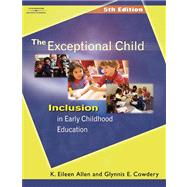
| Foreword | vii | ||||
| Preface | viii | ||||
| Acknowledgments | xii | ||||
| SECTION I Early Intervention and Public Policy | 1 | (60) | |||
|
2 | (23) | |||
|
4 | (1) | |||
|
5 | (2) | |||
|
7 | (6) | |||
|
13 | (1) | |||
|
14 | (2) | |||
|
16 | (2) | |||
|
18 | (5) | |||
|
23 | (2) | |||
|
25 | (19) | |||
|
26 | (1) | |||
|
27 | (2) | |||
|
29 | (6) | |||
|
35 | (1) | |||
|
36 | (4) | |||
|
40 | (4) | |||
|
44 | (17) | |||
|
45 | (2) | |||
|
47 | (2) | |||
|
49 | (3) | |||
|
52 | (2) | |||
|
54 | (3) | |||
|
57 | (4) | |||
| SECTION II Likenesses and Differences Among Children | 61 | (100) | |||
|
62 | (15) | |||
|
64 | (4) | |||
|
68 | (2) | |||
|
70 | (3) | |||
|
73 | (4) | |||
|
77 | (20) | |||
|
78 | (7) | |||
|
85 | (2) | |||
|
87 | (5) | |||
|
92 | (5) | |||
|
97 | (20) | |||
|
99 | (6) | |||
|
105 | (7) | |||
|
112 | (5) | |||
|
117 | (23) | |||
|
118 | (7) | |||
|
125 | (8) | |||
|
133 | (1) | |||
|
134 | (4) | |||
|
138 | (2) | |||
|
140 | (21) | |||
|
141 | (1) | |||
|
141 | (3) | |||
|
144 | (7) | |||
|
151 | (1) | |||
|
152 | (3) | |||
|
155 | (1) | |||
|
156 | (5) | |||
| SECTION III Planning for Inclusion | 161 | (74) | |||
|
162 | (21) | |||
|
164 | (5) | |||
|
169 | (9) | |||
|
178 | (5) | |||
|
183 | (33) | |||
|
184 | (2) | |||
|
186 | (3) | |||
|
189 | (10) | |||
|
199 | (3) | |||
|
202 | (7) | |||
|
209 | (5) | |||
|
214 | (2) | |||
|
216 | (19) | |||
|
217 | (4) | |||
|
221 | (9) | |||
|
230 | (5) | |||
| SECTION IV Implementing Inclusive Early Childhood Programs | 235 | (168) | |||
|
236 | (20) | |||
|
237 | (2) | |||
|
239 | (8) | |||
|
247 | (4) | |||
|
251 | (1) | |||
|
252 | (4) | |||
|
256 | (22) | |||
|
257 | (1) | |||
|
258 | (1) | |||
|
258 | (5) | |||
|
263 | (4) | |||
|
267 | (5) | |||
|
272 | (1) | |||
|
273 | (5) | |||
|
278 | (17) | |||
|
280 | (3) | |||
|
283 | (8) | |||
|
291 | (4) | |||
|
295 | (24) | |||
|
296 | (1) | |||
|
297 | (2) | |||
|
299 | (13) | |||
|
312 | (1) | |||
|
313 | (4) | |||
|
317 | (2) | |||
|
319 | (19) | |||
|
320 | (1) | |||
|
320 | (2) | |||
|
322 | (3) | |||
|
325 | (1) | |||
|
326 | (3) | |||
|
329 | (3) | |||
|
332 | (2) | |||
|
334 | (4) | |||
|
338 | (24) | |||
|
339 | (1) | |||
|
|||||
|
340 | (1) | |||
|
341 | (1) | |||
|
342 | (12) | |||
|
354 | (3) | |||
|
357 | (5) | |||
|
362 | (24) | |||
|
363 | (5) | |||
|
368 | (13) | |||
|
381 | (5) | |||
|
386 | (17) | |||
|
387 | (1) | |||
|
387 | (6) | |||
|
393 | (6) | |||
|
399 | ||||
| CONTRIBUTED ESSAY: Inclusion in Early Childhood Education: What We Have Learned and Where Are We Going? | |||||
|
403 | (15) | |||
| Appendix A Selected List of Screening Tools and Assessment Instruments for Use with Infants and Young Children | 418 | (4) | |||
| Appendix B Preschool Profile | 422 | (3) | |||
| Appendix C Sources of Information, Support, and Training Material for Teachers and Parents of Children with Developmental Disabilities | 425 | (3) | |||
| Appendix D Mental Retardation as Defined by the American Association on Mental Retardation | 428 | (2) | |||
| Appendix E Early Learning and Developmental Diversity | 430 | (4) | |||
| Appendix F The Gifted Child | 434 | (3) | |||
| Glossary | 437 | (14) | |||
| Index | 451 |
The New copy of this book will include any supplemental materials advertised. Please check the title of the book to determine if it should include any access cards, study guides, lab manuals, CDs, etc.
The Used, Rental and eBook copies of this book are not guaranteed to include any supplemental materials. Typically, only the book itself is included. This is true even if the title states it includes any access cards, study guides, lab manuals, CDs, etc.